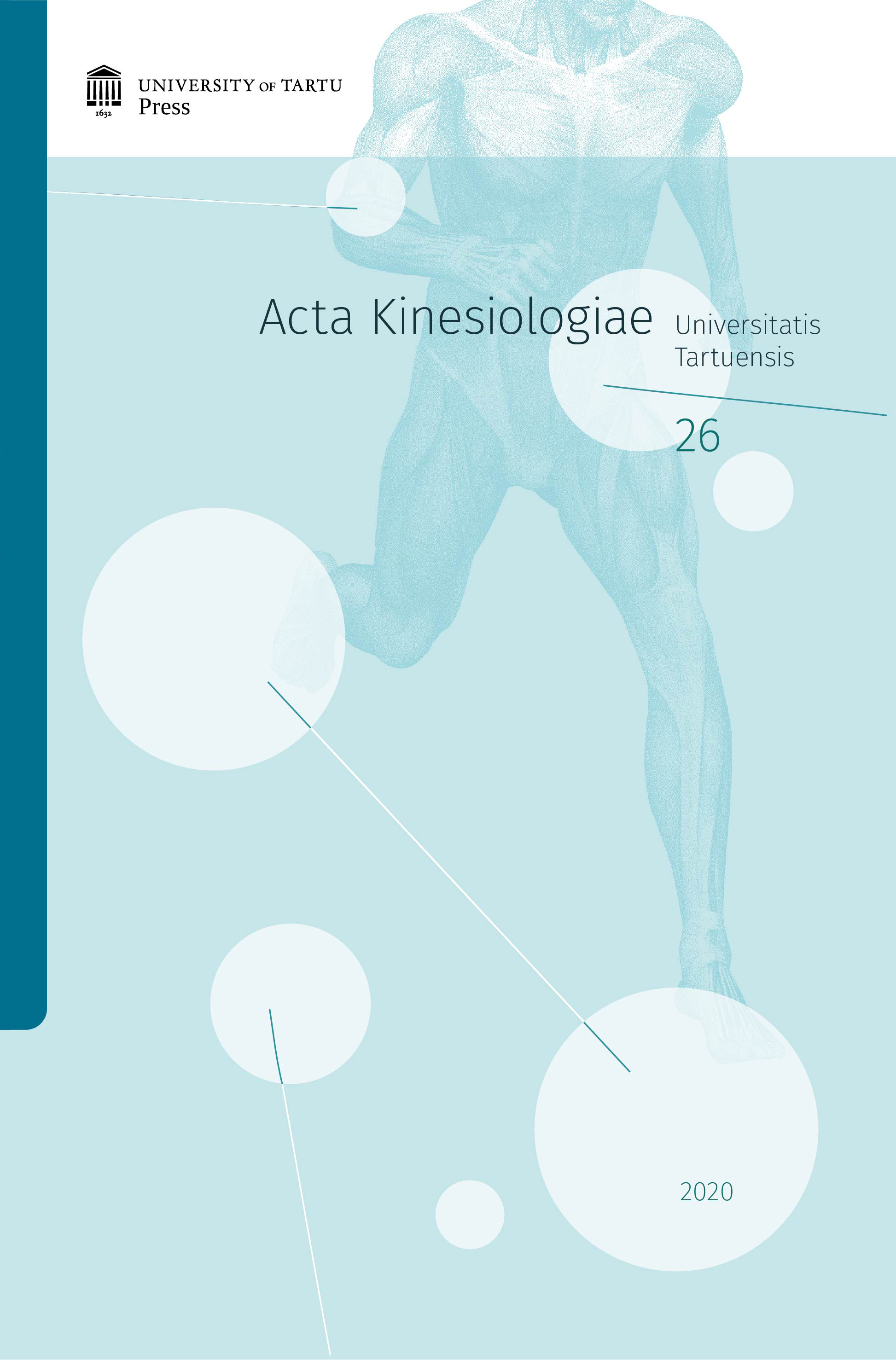The effect of Estonian folk dance practice on static balance performance in young females
DOI:
https://doi.org/10.12697/akut.2020.26.06Keywords:
Estonian folk dance practice, balance performance, centre of pressureAbstract
The aim of the present study was to establish the changes that occur in dancers’ static body balance indicators during rest, in case of interfering factors and in stress condition. The sample consisted of 14 advanced female folk dancers at the age of 16–20 years. The participants’ static body balance was measured at the beginning (in the autumn) and at the end (in the spring) of the eight-month dancing period. Static body balance indicators were registered on a dynamographic platform within 30 seconds, standing on bipedal on stable and unstable support surface in eyes-open (EO) and eyes-closed (EC) conditions. The Flamingo test balance control, the balance control after spinning around and jumping tests were conducted only in EO condition. The following parameters were registered: the movements of the centre of pressure (CoP) in the anterior-posterior (AP) and medio-lateral (ML) dimensions; the length, speed and area of the trajectory. According to the study, folk dancers’ CoP movements in the AP and ML dimensions, measured in different conditions (EO, EC), on stable and unstable support surface, did not change significantly after the eight-month dancing practice. The young folk dancers’ static body balance, assessed by CoP movement trajectory, speed and area, improved considerably over the eight-month training period. Flamingo test results indicate that practising folk dance develops the young female folk dancers’ right and left side static stability equally. In the context of Estonian folk dance practice, including preparation for performing at dance festival, the young female folk dancers’ balance performance improved both in vestibular instability (spins, standing on unstable support surface and in EO condition) and fatigue (jumping test) conditions.


